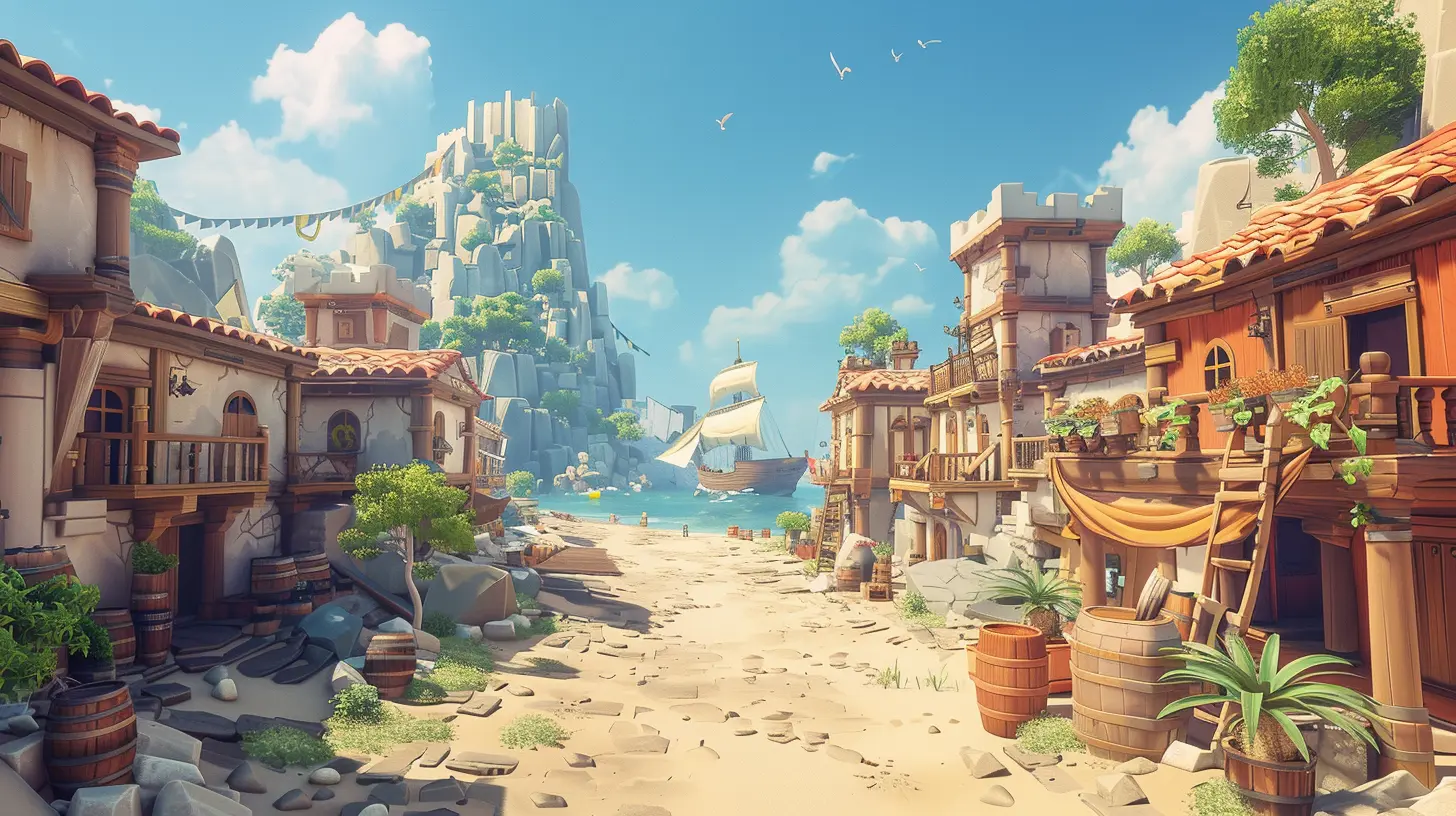Essential Tools and Plugins Every Unity Developer Should Know
4 September 2025
If you've been working with Unity for a while—or even if you're just starting out—chances are you've realized that there's way more to game development than just dragging and dropping assets or writing a few scripts. The Unity Editor is powerful, no doubt. But to unlock its full potential, you need the right set of tools and plugins.
Think of Unity like a Swiss Army knife. It’s got everything you need to get started, but with the right extras, it becomes a full-fledged game development beast. Whether you're aiming to build immersive 3D worlds, hyper-casual mobile games, or even VR experiences, there are plugins out there that can seriously speed up your workflow, boost productivity, and make your life as a developer a whole lot easier.
In this article, we’re diving deep into the essential tools and plugins every Unity developer should have in their arsenal. These aren't just our random picks — we're talking productivity lifesavers, performance boosters, and creativity enhancers.
Let’s get straight into it.
1. Unity Asset Store – Your Treasure Trove
Before we get into specific tools, let’s talk about the holy grail — the Unity Asset Store. If you're not using it to its full potential, you're missing out big time.Whether you need drag-and-drop UI systems, fully rigged characters, scripts, shaders, or even complete game templates, the Asset Store has your back. It’s like a cheat code for getting more things done in less time.
But remember—plugins are tools, not magic wands. Always vet the plugins, read the reviews, and make sure they’re compatible with your project’s Unity version.
2. Visual Studio + Rider – Your Scripting Sidekicks
When it comes to writing C
scripts in Unity, you’ve basically got two heavyweight contenders: Visual Studio and JetBrains Rider.
- Visual Studio is the default IDE that comes with Unity. It’s solid, it’s reliable, and with the Unity integration tools, it does a good job. It has built-in debugger support, IntelliSense, and more.- Rider, on the other hand, is the slicker, faster, and arguably smarter IDE. It's like Visual Studio on steroids. It’s specifically fine-tuned for Unity development, and comes with features like Unity Explorer, shader support, and deep debugging tools.
If you write a lot of code (and let’s be honest, you will), investing time into learning Rider could be a game-changer.
3. Odin Inspector – Inspector on Steroids
Ever wish Unity's Inspector panel was a bit more… sensible? Meet Odin Inspector.This plugin lets you create powerful custom inspectors without writing a ton of boilerplate code. You can organize your Inspector neatly, create tabs, hide or show properties dynamically, and generally make your scripts a joy to work with.
It’s especially helpful for larger projects where managing tons of scripts can otherwise become a hot mess.
4. Cinemachine – Take Control of Your Camera
Camera work can make or break your game's visual storytelling. Cinemachine, a free Unity plugin, revolutionizes camera systems for both 2D and 3D games.Instead of writing complex scripts, you can set up dynamic, follow, and cut-scene cameras with just a few clicks. It’s smart enough to avoid obstacles and smooth out jittery movement.
Pair it with Timeline, and boom—you’ve got a seamless, cinematic cutscene engine.
5. ProBuilder – Build Levels Right Inside Unity
Adjusting level geometry without leaving Unity? Yes, please.ProBuilder is Unity’s built-in 3D modeling tool. It lets you create basic shapes, prototype levels, or even build full 3D environments. Perfect for level designers who don’t want to juggle between different 3D modeling software.
It's not a replacement for Blender or Maya, but for quick mockups or even final touches, it’s a huge time-saver.
6. DOTween – Animation Made Easy
You could use Unity’s built-in animation system, but if you prefer clean, readable code for animations, DOTween is your best friend.It’s a powerful tweening engine that makes it incredibly easy to animate everything from movement and rotation to UI fades or scale pops. The syntax is super intuitive, and it saves you from writing clunky coroutine-based sequences.
Trust me, once you try DOTween, there’s no going back.
7. Shader Graph + Amplify Shader Editor – Visual Magic
Shaders can be intimidating, but with tools like Shader Graph and Amplify Shader Editor, you can visually create stunning effects without writing a single line of code.- Shader Graph is Unity’s official node-based editor. It’s great for stylized effects, surface shaders, and more.
- Amplify Shader Editor is more advanced and arguably more flexible, offering granular control and extra nodes that Shader Graph doesn’t include.
If your game relies on visual flair, shaders can take it from good to drop-dead gorgeous.
8. Unity Profiler + Deep Profiling Tools – Know What’s Slowing You Down
Performance issues can be a nightmare, especially when optimizing for mobile or VR. That’s where the Unity Profiler comes in.This tool allows you to see what exactly is eating up your CPU/GPU usage, memory, or causing frame drops. You can drill down to individual scripts, rendering issues, and garbage collection problems.
If you want to take it a step further, try RenderDoc or Deep Profiler mode for analyzing performance bottlenecks like a pro.
9. Addressables – Smarter Asset Management
As projects grow, managing assets efficiently becomes critical. Enter Addressables.This system allows you to load and unload assets dynamically, reducing memory usage and improving load times. It’s perfect for large games with open worlds, episodic content, or downloadable updates.
It takes a bit of a learning curve, but the performance and organizational benefits are well worth it.
10. Git + GitHub Desktop / Sourcetree – Version Control Is Your Lifeline
If you’re not using version control yet... stop everything and start now. Seriously.Git, paired with visual tools like GitHub Desktop or Sourcetree, keeps your project safe from catastrophic mistakes. Whether it’s a bad script, a broken prefab, or just a risky experiment, version control gives you a way back.
It also makes working with teams 10x smoother. Need I say more?
11. Unity Collaborate (Plastic SCM) – Built-in Teamwork Tools
If Git feels overwhelming or you're working with non-developers, Unity Collaborate, now evolving under Plastic SCM, is a simpler, more beginner-friendly alternative.It’s tightly integrated into the Unity Editor, which makes syncing up with your team easier than ever. You can push/pull changes, manage merges, and resolve conflicts without leaving Unity.
It might not be as powerful as Git, but for small to mid-sized teams, it works like a charm.
12. NavMesh + A* Pathfinding – Smarter AI Movement
Creating believable AI means one thing: solid navigation.- Unity’s NavMesh is great for most navigation tasks. It auto-generates paths, handles obstacles, and supports off-mesh links.
- A* Pathfinding Project by Aron Granberg goes even deeper. It supports more complex and customizable pathfinding setups, like grid-based movement, penalties, and dynamic obstacles.
Great for strategy games, tower defense, or any game with advanced AI.
13. Rewired – Better Input Mapping
Unity’s Input System gets the job done… to a point. If you need more, like advanced controller support, remappable keybinds, or multi-device handling, Rewired is the answer.It supports hundreds of controllers out-of-the-box, and the API is rock solid. Yes, Unity now has a new Input System, but Rewired is still a champion in the ring.
14. Playmaker – Visual Scripting for Non-Coders
Not everyone is a coding wizard. That’s where Playmaker swoops in.It lets you create game logic using nodes and flowcharts instead of writing C#. Ideal for designers, artists, or anyone who finds traditional scripting intimidating.
You can even mix and match it with your own scripts for flexible systems that anyone on your team can tweak.
15. Debugging Tools – Don’t Fly Blind
Your game crashes. You panic. But with the right debugging tools, you don’t have to.- Console Enhanced upgrades the Unity Console with clickable stack traces and search filters.
- Peek by Ludiq lets you inspect objects, methods, and properties directly in the editor.
These little helpers shave hours off your development time by putting the info you need front and center.
Final Thoughts
There you have it—a solid mix of essential Unity tools and plugins that every developer should know and probably be using already. Of course, the tools you’ll actually use day-to-day depend on the kind of game you’re building. But having these in your toolkit gives you the flexibility to scale your project, improve teamwork, and crush bugs faster.Unity is already a beast of a platform. But with the right combo of plugins and tools, you’re not just working smarter—you’re leveling up as a developer.
So go ahead... upgrade your toolkit. Future-you will thank you.
all images in this post were generated using AI tools
Category:
Unity GamesAuthor:

Tayla Warner
Discussion
rate this article
1 comments
Presley Kirkland
This article highlights crucial tools and plugins that streamline development in Unity, enhancing efficiency and creativity. A must-read for developers aiming to optimize their workflow effectively.
September 5, 2025 at 5:10 AM

Tayla Warner
Thank you! I'm glad you found the article helpful. These tools truly can make a big difference in development.


